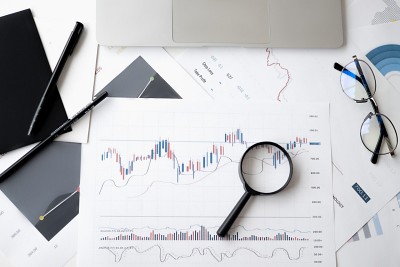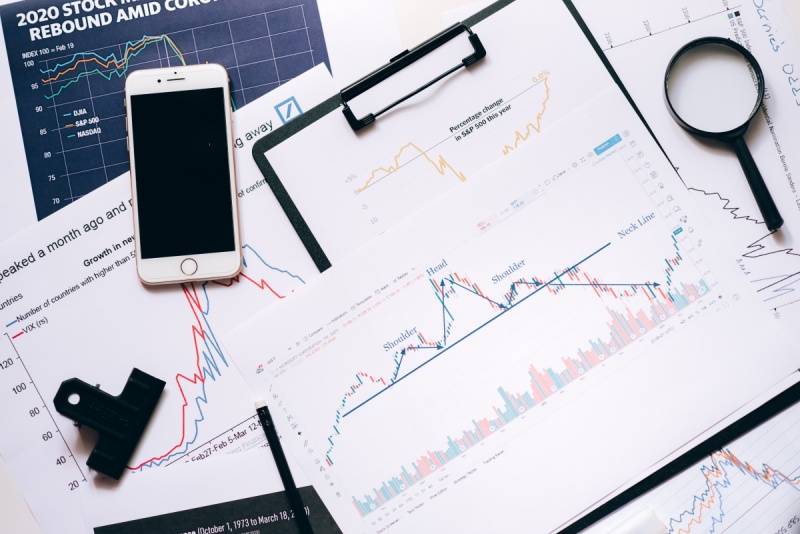Data analysis is taking out meaningful or valuable information from a data set that can be used later in your decision-making process.
When you identify and relate the results of your previous actions when making newer decisions, whether, for day-to-day activities or critical business-related choices, you are employing data analysis techniques to make those decisions. To properly analyze your data, you first clean, organize, and give it a proper structure to make the best use of that data and make it more reliable.
You must be wondering why you need to learn about data analysis. Are you familiar with sayings that revolve around “learn from your mistakes”? That is precisely what data analysis helps you achieve.
Through data analysis, you can learn the steps you should avoid taking this time. Of course, multiple methods and types of data analysis include text, predictive, prescriptive, statistical, and diagnostic research.
Enough about data analysis; in this article, our primary focus will be on one specific type of data analysis: Statistical Analysis. Through the course of this article, we will learn about:
- The basics of statistical analysis, i.e., what it is
- Types of statistical analysis along with their examples
- Methods of statistical analysis
What is Statistical Data Analysis?
When someone interprets the statistics of their data through statistical analysis, they can learn about what happened before that can be improved this time. Statistical analysis lets you point out the different trends in your data and make better and more informed business decisions.
You can use statistical analysis to your and your company’s advantage by identifying the factors holding you back and making improvements based on the study results.
Example: Through the insights, you found from a statistical analysis of your company, you can find out which one of your sectors isn’t working as it should, and you can make improvements in that sector accordingly.
What enables you to process all your data and perform statistical analysis? There are multiple software out on the market that will allow you to conduct a statistical analysis of your data efficiently. Some of the most popular software are MATLAB, Python, SPSS Statistics, RMP, etc.
Not only can these programs evaluate your data, but they can also present insights in the form of various graphs or charts so that you can understand the results more quickly and explain them to the rest of your company.

Benefits Statistical Analysis Brings You
Now, you must be wondering what benefits conducting a statistical analysis brings you. Why would someone want to spend money on statistical analysis? Well, let us tell you why:
- It allows you to keep an eye on the finances of your entire company, so you know where all the money is going and how well different sectors of your company are performing.
- You can set the budget yourself, i.e., make more cost-efficient decisions. You could also invest in sectors and projects in which you see potential.
- Before making new changes, you could conduct a statistical analysis to see if that change would bring you profits or not.
- In terms of sales, you can conduct a market analysis to see if your company is keeping up with the competition in the market.
- You can see what is causing the sales of other companies to go up or down and take measures accordingly.
- Before you start a business, you can conduct a statistical analysis of how other companies are doing in the same field of business and identify what you can offer that is different from what other companies are already offering.
- The key to a successful business is workplace harmony. When your company’s different sectors are working together in harmony, you can only achieve your full potential. As we mentioned before, you can conduct a statistical analysis of your workplace to see how well the different sectors of your company are doing.
- Statistical analysis would be more beneficial to you if you happen to be a large company that has to deal with and evaluate large data sets because statistical analysis allows you to sift through your company’s data without any hassle and without missing out on any of the minor or significant details which humans could sometimes miss.
- We think the most important benefit of conducting a statistical analysis is that it makes the decision-making process easier for you.
- After performing a proper statistical analysis, you have all the essential insights in one place, and you can see what steps can be taken to make necessary improvements.
- When making important decisions, you need all relevant data and details.
-

How To Calculate Critical Value: A Guide with Examples
-

Batch Size and Epoch – What’s the Difference?
-

12 Data Analysis Techniques You Need to Know
Types of Statistical Analysis in Research
There are seven distinct types of statistical data analysis, and each one of those types serves another purpose; some are often used together, namely:
- Mechanistic Analysis
- Prescriptive Analysis
- Exploratory Data Analysis
- Descriptive Statistical Analysis
- Causal Analysis
- Inferential Statistical Analysis
- Predictive Analysis
Let’s move on to their details:
1. Mechanistic Analysis:
This approach of statistical analysis may be the one that works with the most detail. The primary goal of this type of statistical analysis is to see how the change in one variable affects the rest. This is done for all variables while assuming that external variables will not affect the data overall.
This type of statistical analysis is used the least because of all the effort and details it requires, but the accuracy of the results makes it worth it. This makes it easier to recognize how certain variables will react when changes are made in others.
For Example, when researching the climatic conditions and environmental issues, you will have to look at all the reasons causing the changes and how the increase or decrease in one of the variables will affect the rest.
2. Prescriptive Analysis:
Similar to the prescription you get from your doctor, the prescriptive statistical analysis also tells what you can do to your data to improve it. This means that prescriptive analysis is the best option when you need to come up with a suitable solution or make a decision using your data.
Some people often confuse this type with descriptive statistical analysis. Still, it must be understood that descriptive statistical analysis merely describes what is happening in your data. In contrast, prescriptive analysis tells you what you can do to your data, i.e., giving suggestions based on your requirements.
You can derive the results for this type of analysis by observing graphs and various machine learning algorithms. They also help you understand your data and give you suggestions that may prove beneficial. Company owners use this type of statistical analysis to improve their decision-making skills.
For Example: Whenever you see a “recommended for you,” “explore more,” or “for you” page over the internet, they are all taking help from the prescriptive analysis technique in the background to improve your experience with that particular site or app.
3. Associative Statistical Data Analysis:
When you have to deal with an extensive data set and display the relationship between the different members of that data set, you can use this type of statistical analysis to get the job done.
This may sound relatively simple, but it is one of the most complex types of statistical analysis because it requires the supervision of an expert and many advanced tools. You can conduct this type of analysis using regression or coefficients of variations.
4. Descriptive Statistical Analysis:
The descriptive statistical analysis summarizes all your numerical data into a tabular form so that you extract data from that table and present the results in various charts or graphs. Descriptive statistical analysis stays true to the requirements, so you won’t have to worry about the insights from data that do not concern your hypothesis.
For descriptive statistical analysis, data is processed through tabulation, mean, median mode and standard deviation, etc. This method is the simplest and most compact way of statistical analysis. Unfortunately, you can only use this method when you have to represent your data and not when you have to conclude.
For Example: if you wish to survey to get a certain number of people’s opinions on a product, that data can be interpreted using descriptive statistical analysis.
5. Causal Analysis:
As the name would suggest, the causal analysis tells you what caused the results to turn out the way they did. This includes detecting the faults in your dataset or identifying the reason for the success or failure of a product launch or a sudden downfall or spike in sales.
You can also use the results of this analysis to see what changes you can make in your data set to improve your product or increase your sales. This statistical analysis takes the help of machine learning algorithms suitable for identifying such trends in your data.
For Example: You can use causal analysis to determine why many people are showing symptoms of the same illness in the same area.
6. Inferential Statistical Analysis:
This type of statistical analysis calculates the results based on probability. This means that when you don’t have enough data, you assume that the consequences for that data set are based on the results of a similar data set.
This type usually comes in handy when you have to make predictions for your hypothesis that involves a vast collection of data, so you make predictions based on a smaller sample set that is taken from the larger one.
Calculations for this type are done by sampling theory or statistical control, and through such methods, valid generalizations are made about the entire data set.
For Example: When you have to assume how well an average student will do on a test, you take a smaller group of students with different mental capacities and see how they do on that test to assume how well similar students could perform
7. Predictive Analysis:
This type may seem similar to the one discussed above, i.e., assumptions have to be made in both classes, but assumptions made for both types are based on various aspects of the data.
For the inferential statistical analysis, one must make appropriate estimates based on a data set extracted from a more significant data set.
In predictive analysis, you have to make assumptions for the future based on the reactions in the past. The predictive statistical analysis takes help from different machine learning algorithms, artificial intelligence, or data mining techniques because such techniques produce the best results while making such predictions.
For Example: When you have to predict how well a new product will do in the future, you will first check how successful the launch of a similar effect was and make appropriate assumptions based on that.

5 Approaches or Methods for Conducting a Statistical Analysis
Although the specific procedures for conducting a statistical analysis are different but here are some of the most basic methods through which you can run a statistical analysis:
- Standard Deviation
- Hypothesis Testing
- Mean
- Regression
- Sample Size Determination
1. Standard Deviation
The grading system is often based on calculations derived from the standard deviation method. What is a standard deviation system, and how does it work?
The standard deviation method tells you what results you will get as you move around the mean of your data set. The standard deviation could be low or high. Having a low standard deviation means a minor difference in how the different values of the data set behave around the mean and vice versa.
2. Hypothesis Testing:
How do people know what they’re saying is correct during an argument? They make assumptions and find logical reasoning that supports their belief. That is how hypothesis testing works. You assume (your hypothesis), and then you perform all the required calculations to prove that the assumption you made is correct.
This method is also referred to as the “T-Testing” method. This method is proof that there is always a reason behind everything. Sometimes you could test your data against only one hypothesis, and at other times you can make multiple assumptions to try your data for more accuracy.
3. Mean:
The mean of a data set or the average of a data set is both the same. You must have learned how to calculate the average in school, i.e., add up all the values in the sample set and divide it by the number of values in the sample set. How does something this simple help you out with your business?
The average number tells you what values are most common in your sample set, which means that you can use it to predict the reaction or describe what is more popular. Now, not only is this method proven to be quite simple and easy, but it is also swift!
4. Regression
This method involves two variables. One must be independent, e.g., time, whereas the other must be dependent, e.g., sales. These two variables are then plotted on an x and y-axis graph (the independent variable on the x-axis and the dependent variable on the y-axis), and all the values of the sample data set are then plotted on this graph.
Once that is done, a line of best fit is drawn that goes through the area where the points are closer. This helps you predict the trend in your data set and tells you what sort of values occur the most. The more closely spaced the points are, the stronger the relationship is between their ends. In addition, this method also tells you how the change in one variable affects the other and how dependent they are on each other.
5. Sample Size Determination
When you must work with a vast data set, e.g., the population of an entire country, you can’t work with all that information at once because it increases the complexity of the task, and it also increases the chances of errors because some of the information collected could either be corrupt or false. Therefore, larger data sets are usually divided into smaller chunks (sample data sets) based on the requirement of your hypothesis, and each sample data set is tested separately.
You need to remember that the sample data you’re working with isn’t too big or too small because the more extensive data set would give you erroneous values, whereas the results for the sets that are too small may not apply to those of the larger sets. Once you have the ideal sample size, you can then perform the statistical analysis and compare the results of separate groups to recognize the trends in your data.
Key Takeaways
With the increase in big data these days, we need more innovative tests to analyze the data we have collected. Statistical analysis is especially important because it allows us to recognize the trends in numerical data more efficiently.
In this article, we talked about why statistical analysis has become so popular and its types, along with different methods to conduct a statistical analysis. Hopefully, by now, you have understood its importance, and the examples have clarified its use in research.

